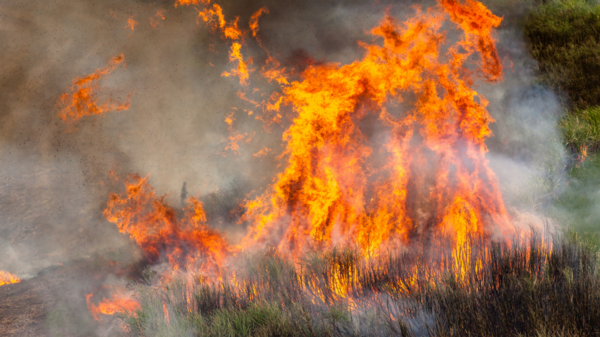Preparation and organisation are crucial for ensuring a safe and effective burn says New Zealand's leading Rural Consultants for AgSafe New Zealand Ltd.

Fire is a useful land management tool, but its use does come with some danger. Knowledge and understanding of how to use fire safely will reduce the risk to life, property and the environment says New Zealand’s leading farm consultants, AgSafe NZ.
Fire is normally used to clear out unnecessary scrub or vegetation and is often done to prepare the land for uses or for disease control. “Every land clearing burn is distinct with more complicated burns requiring fire behaviour knowledge to create the burn plan,” says Jim Findlay, Rural Consultant for AgSafe New Zealand Ltd.
Before you start it is a smart idea to speak to your local fire authority before lighting the fire as they can provide advice and guidance. “Remember that a fire officer’s recommendation does not remove your accountability for the fire but making use of their expertise can significantly minimise your risk,” advises Jim. For more complicated controlled burns consider contacting specialist contractor services to manage and perform your burn.
Your local Rural Fire Authority may need you to have a burn plan. Burn plans account for many factors such as topography, fuel and weather to understand how the fire will behave. It illustrates the safest and most effective way to carry out a specific fire.
You also need to find out what the current fire season status is for your area, and whether you need a fire permit. Throughout the restricted fire season, you will need a permit. You are not allowed light any open fire during a total fire ban.
Take a look at the long-range weather forecast for the upcoming 48 hours and make sure no strong winds are forecast. “Also try lighting your fire after 1pm as weather is typically steadier in the afternoon,” adds Jim.
The fire should only be lit with wind blowing away from any buildings shelter belt, trees, fences, or other flammable material.
During burning you need to be vigilant to put the fire out at the first sign of a change in weather or other conditions that could make the fire be of your control.
Winds can incite a fire back into life and shift embers, generating unwanted fires. In fact, mounds of burnt vegetation can hold heat for months after the initial burning. It is recommended that you check your pile regularly in the days and weeks following burning to ensure it is cold in the centre. Turn the pile and, if feasible, apply water to cool it down.
Additional resources on how to safely use fire as a land management tool is available from: the Fire and Emergency website at https://fireandemergency.nz/farms-rural-properties-and-rural-businesses/
Contact AgSafe NZ Ltd:
Phone: 027-2872886
Email: james@agsafe.nz
Website: http://agsafe.nz/
Facebook: https://www.facebook.com/AgSafeNZ/
LinkedIn: https://www.linkedin.com/company/agsafe-nz/
Instagram: https://www.instagram.com/agsafenz/
Contact MediaPA:
Phone: 0274 587 724
Email: phillip@mediapa.co.nz
Website: www.mediapa.co.nz
Facebook: www.facebook.com/MediaPA
